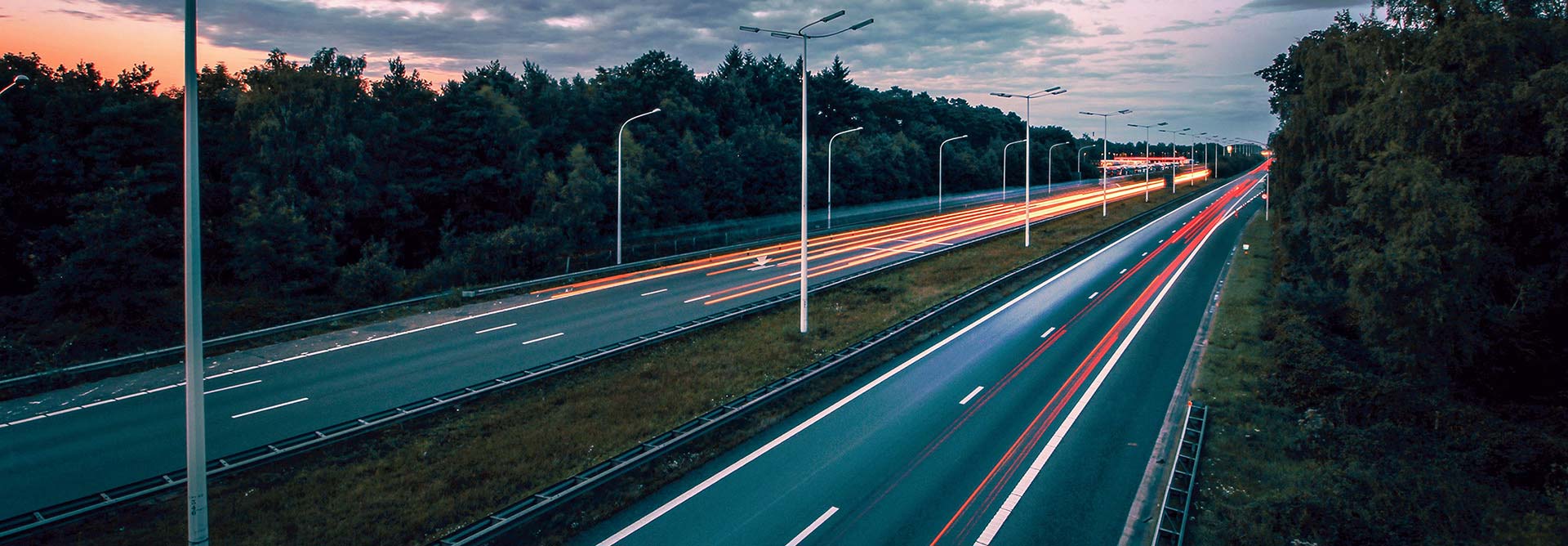
What is STRABYS®?

Business planning is not just any process; it is the veritable structure that holds the business together. It has implications for a host of processes including budgeting, business reviews, performance management, marketing planning and sales execution. The typical business planning process is an iron-clad feature that is tied directly to budgeting, and is designed for dilution when performance lags targets. In order to be an enabler of performance, the business planning process needs to build in flexibility. STRABYS® profiles the strengths and weaknesses of your business planning process, examines its interlinkages with surrounding processes, and identifies the need to build in planning flexibility through scenarios and milestones, and their attendant resource allocation, strategies and interventions.
Business planning is the veritable structure that holds the business together, and influences a host of processes including budgeting, performance management and sales execution. The typical planning process is iron-clad, tied tightly to budgeting, and designed for gradual dilution. Instead, it needs to build in flexibility. STRABYS® profiles the strengths and weaknesses of your planning process; examines interlinkages with surrounding processes; and identifies areas to build flexibility through scenarios, their attendant milestones, and revisions in resource allocation, strategies and interventions.
Business planning is the veritable structure that holds the business together, and influences a host of processes including budgeting, performance management and sales execution. The typical planning process is iron-clad, tied tightly to budgeting, and designed for gradual dilution. Instead, it needs to build in flexibility. STRABYS® profiles the strengths and weaknesses of your planning process; examines interlinkages with surrounding processes; and identifies areas to build flexibility through scenarios, their attendant milestones, and revisions in resource allocation, strategies and interventions.
Business planning is the veritable structure that holds the business together, and influences a host of processes including budgeting, performance management and sales execution. The typical planning process is iron-clad, tied tightly to budgeting, and designed for gradual dilution. Instead, it needs to build in flexibility. STRABYS® profiles the strengths and weaknesses of your planning process; examines interlinkages with surrounding processes; and identifies areas to build flexibility through scenarios, their attendant milestones, and revisions in resource allocation, strategies and interventions.
Why worry about “planning flexibility”? Why get STRABYS®?
Business planning has typically been conceived as a one-way static process, meant to make the first move and then remain immune and impervious to reactions from the environment. The only dynamism permissible is the quarterly raising or reducing of performance targets, following the trail of performance. The most striking lacunae in planning is the scant regard to likely reaction of competitors to strategic actions. For planning to guide and aid your business performance, it has to incorporate flexibility, which is best done by building scenarios that are, in turn, defined by milestones. Get STRABYS® to inject dynamism in your business planning process and make it more flexible through actionable scenarios that are characterised by shifts in resource allocation, customer strategies and market interventions.
Business planning has typically been conceived as a one-way static process, meant to make the first move and remain immune and impervious to environment reactions. The only dynamism seen is the quarterly raising or reducing of performance targets. For planning to aid your business performance, it has to incorporate flexibility, which is best done by building scenarios that are defined by milestones. Get STRABYS® to inject dynamism and flexibility in your business planning process through scenarios characterised by shifts in resource allocation, customer strategies and market approaches.
Business planning has typically been conceived as a one-way static process, meant to make the first move and remain immune and impervious to environment reactions. The only dynamism seen is the quarterly raising or reducing of performance targets. For planning to aid your business performance, it has to incorporate flexibility, which is best done by building scenarios that are defined by milestones. Get STRABYS® to inject dynamism and flexibility in your business planning process through scenarios characterised by shifts in resource allocation, customer strategies and market approaches.
Business planning has typically been conceived as a one-way static process, meant to make the first move and remain immune and impervious to environment reactions. The only dynamism seen is the quarterly raising or reducing of performance targets. For planning to aid your business performance, it has to incorporate flexibility, which is best done by building scenarios that are defined by milestones. Get STRABYS® to inject dynamism and flexibility in your business planning process through scenarios characterised by shifts in resource allocation, customer strategies and market approaches.

Who will benefit from STRABYS®?

Chief executives, business heads and functional heads are major beneficiaries of STRABYS®. First, STRABYS® builds flexibility which helps cope with environmental reactions including retaliatory competitor moves. Second, STRABYS® wipes out the culture of performance degradation caused by the vicious cycle of performance failure and budgetary revisions. Third, STRABYS® synchronises between the business and environment, allowing for smart timely interventions. Through STRABYS®, Chief Strategy Officers benefit marketing and sales by offering a planning process that is in closer touch and sharper engagement with the environment. With STRABYS®, CFOs and CPOs are now able to get rid of the negotiation-ridden culture that infests target setting and business reviews.
Chief executives, business heads and functional heads are major beneficiaries of STRABYS®. First, STRABYS® builds flexibility to cope with environmental reactions. Second, STRABYS® helps wipe out the pattern of performance degradation caused by the vicious cycle of performance failure and budgetary revisions. Third, STRABYS® synchronises between the business and environment. Chief Strategy Officers can now offer a planning process that is sharply engaged with the environment. CFOs and CPOs are now able to get rid of the negotiation-ridden culture that infests target setting.
Chief executives, business heads and functional heads are major beneficiaries of STRABYS®. First, STRABYS® builds flexibility to cope with environmental reactions. Second, STRABYS® helps wipe out the pattern of performance degradation caused by the vicious cycle of performance failure and budgetary revisions. Third, STRABYS® synchronises between the business and environment. Chief Strategy Officers can now offer a planning process that is sharply engaged with the environment. CFOs and CPOs are now able to get rid of the negotiation-ridden culture that infests target setting.
Chief executives, business heads and functional heads are major beneficiaries of STRABYS®. First, STRABYS® builds flexibility to cope with environmental reactions. Second, STRABYS® helps wipe out the pattern of performance degradation caused by the vicious cycle of performance failure and budgetary revisions. Third, STRABYS® synchronises between the business and environment. Chief Strategy Officers can now offer a planning process that is sharply engaged with the environment. CFOs and CPOs are now able to get rid of the negotiation-ridden culture that infests target setting.
Where (in which settings) should you get STRABYS®?
Get STRABYS® to strengthen your business planning process when you identify any of five indications. First, “iron-clad content”: when numbers in the business plan appear definitive and inflexible. Second, “external engagement gap”: when the plan is not engaged with external entities and is unable to read or react to environmental reactions. Third, “flat scenarios”: when scenario planning exists but appears to be a “numerical exercise” without milestones, and disconnected from environmental realities. Fourth, “negotiation culture”: when quarterly target revisions are riven by negotiations facilitated by the finance department. Fifth, “absence of content revisions”: when the planning process is characterised by an absence of revisions in resource deployment, market approaches and customer strategies.
Get STRABYS® when you identify any of the following five indications. First, “iron-clad content”: when numbers in the business plan appear definitive and inflexible. Second, “external engagement gap”: when the plan is unable to read or react to environmental reactions. Third, “flat scenarios”: when scenario planning exists but appears to be just a “numerical exercise”. Fourth, “negotiation culture”: when quarterly target revisions are riven by negotiations. Fifth, “absence of content revisions”: when there are no revisions in resource deployment, market approaches and customer strategies.
Get STRABYS® when you identify any of the following five indications. First, “iron-clad content”: when numbers in the business plan appear definitive and inflexible. Second, “external engagement gap”: when the plan is unable to read or react to environmental reactions. Third, “flat scenarios”: when scenario planning exists but appears to be just a “numerical exercise”. Fourth, “negotiation culture”: when quarterly target revisions are riven by negotiations. Fifth, “absence of content revisions”: when there are no revisions in resource deployment, market approaches and customer strategies.
Get STRABYS® when you identify any of the following five indications. First, “iron-clad content”: when numbers in the business plan appear definitive and inflexible. Second, “external engagement gap”: when the plan is unable to read or react to environmental reactions. Third, “flat scenarios”: when scenario planning exists but appears to be just a “numerical exercise”. Fourth, “negotiation culture”: when quarterly target revisions are riven by negotiations. Fifth, “absence of content revisions”: when there are no revisions in resource deployment, market approaches and customer strategies.

How does STRABYS® work?

The design of STRABYS® is based on our proprietary six-part framework called ‘BOUNCE’. With STRABYS®, you undergo four stages of ‘installation’, ‘engagement’, ‘analysis’ and ‘dissemination’ over ten weeks. To install STRABYS®, you identify the indicators of an inflexible business planning process; decide the scope and subject by nominating the performance units that need the assessment; provide relevant data regarding plans, targets and performance; and nominate research respondents. STRABYS® then analyses the data, interacts with respondents, and studies the inputs from research. The final output for leadership includes a quantitative assessment of the quality of business planning along with a qualitative description of interventions to build flexibility and instill dynamism.
The design of STRABYS® is based on our proprietary six-part framework called ‘BOUNCE’. “Installation”, “engagement”, “analysis” and “dissemination” takes place over ten weeks. To install STRABYS®, you identify the indicators of an inflexible planning process; decide the scope by nominating performance units; provide relevant data; and nominate research respondents. STRABYS® analyses the data and interacts with respondents. The final output includes quantitative assessment of the quality of business planning along with qualitative descriptions of interventions to build flexibility.
The design of STRABYS® is based on our proprietary six-part framework called ‘BOUNCE’. “Installation”, “engagement”, “analysis” and “dissemination” takes place over ten weeks. To install STRABYS®, you identify the indicators of an inflexible planning process; decide the scope by nominating performance units; provide relevant data; and nominate research respondents. STRABYS® analyses the data and interacts with respondents. The final output includes quantitative assessment of the quality of business planning along with qualitative descriptions of interventions to build flexibility.
The design of STRABYS® is based on our proprietary six-part framework called ‘BOUNCE’. “Installation”, “engagement”, “analysis” and “dissemination” takes place over ten weeks. To install STRABYS®, you identify the indicators of an inflexible planning process; decide the scope by nominating performance units; provide relevant data; and nominate research respondents. STRABYS® analyses the data and interacts with respondents. The final output includes quantitative assessment of the quality of business planning along with qualitative descriptions of interventions to build flexibility.
When during the operating year should you get STRABYS®?
STRABYS® is designed for biennial as well as episodic usage. STRABYS® requires ten weeks to go through the ‘installing’, ‘engaging’, ‘analysing’ and ‘disseminating’ phases. For episodic usage, we do not suggest a preferred timing. Use STRABYS® whenever you notice any of the five indicators mentioned earlier. When using STRABYS® on a biennial cycle, we recommend usage during the fourth, first or second quarters. Usage during the fourth quarter benefits business planning for the upcoming year. Usage during the second and third quarters allows STRABYS® to provide inputs to the quarter-ending plan and target revision process. We do not recommend usage during the first quarter given that plan execution would have just started, and respondent inputs would be mostly irrelevant.
STRABYS® is designed for biennial as well as episodic usage. For episodic usage, we do not suggest a preferred timing. Use STRABYS® whenever you notice any of the five indicators mentioned earlier. When using STRABYS® on a biennial cycle, we recommend usage during the fourth, first or second quarters. Usage during the fourth quarter benefits business planning for the upcoming year. Usage during the second and third quarters allows STRABYS® to provide inputs to the quarter-ending target revision process. First quarter usage is not advised given that plan execution would have just started.
STRABYS® is designed for biennial as well as episodic usage. For episodic usage, we do not suggest a preferred timing. Use STRABYS® whenever you notice any of the five indicators mentioned earlier. When using STRABYS® on a biennial cycle, we recommend usage during the fourth, first or second quarters. Usage during the fourth quarter benefits business planning for the upcoming year. Usage during the second and third quarters allows STRABYS® to provide inputs to the quarter-ending target revision process. First quarter usage is not advised given that plan execution would have just started.
STRABYS® is designed for biennial as well as episodic usage. For episodic usage, we do not suggest a preferred timing. Use STRABYS® whenever you notice any of the five indicators mentioned earlier. When using STRABYS® on a biennial cycle, we recommend usage during the fourth, first or second quarters. Usage during the fourth quarter benefits business planning for the upcoming year. Usage during the second and third quarters allows STRABYS® to provide inputs to the quarter-ending target revision process. First quarter usage is not advised given that plan execution would have just started.

© Copyright 2019  All rights reserved.
All rights reserved.
© Copyright 2019  All rights reserved.
All rights reserved.
© Copyright 2019  All rights reserved.
All rights reserved.
© Copyright 2019  All rights reserved.
All rights reserved.
